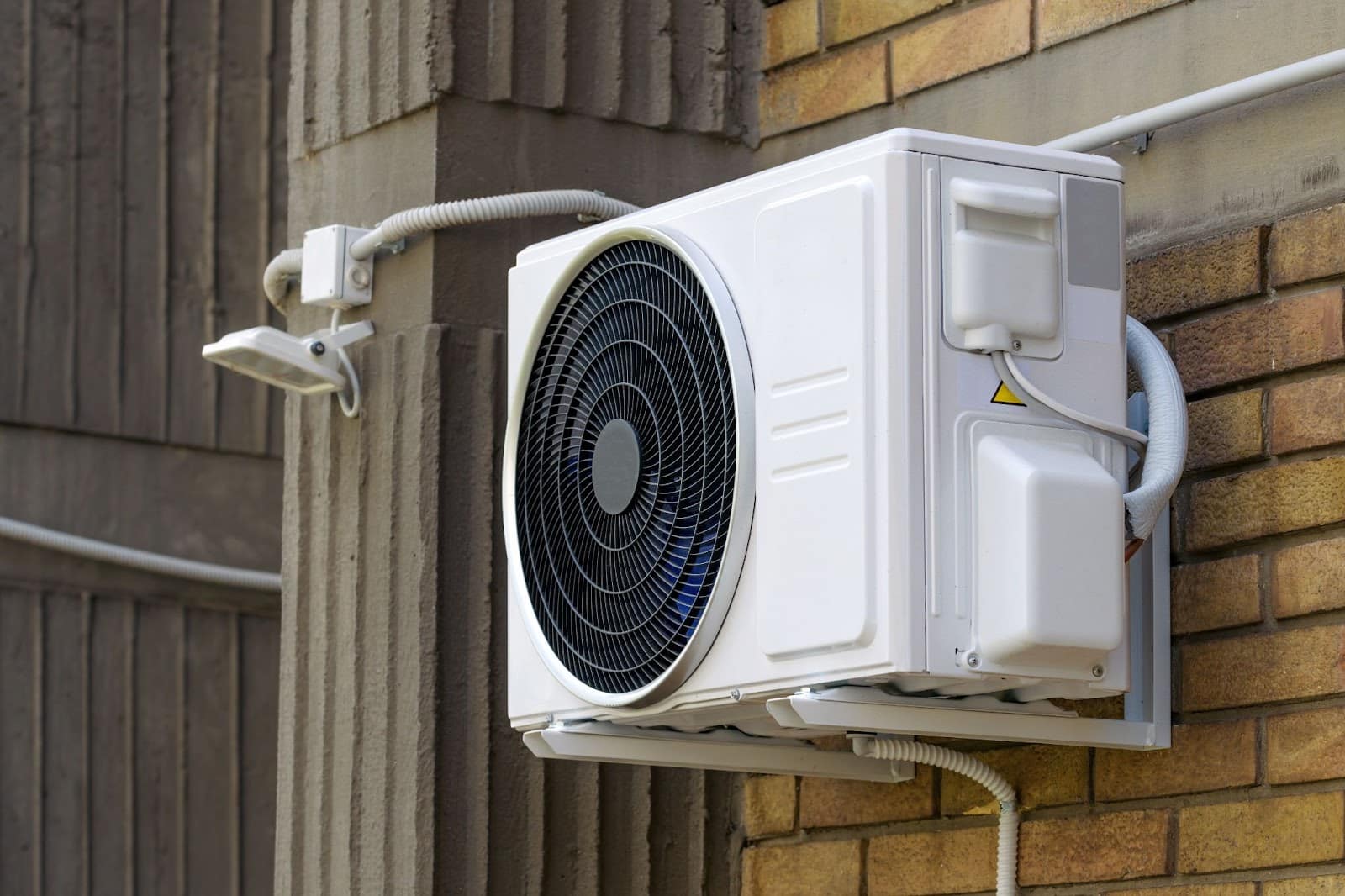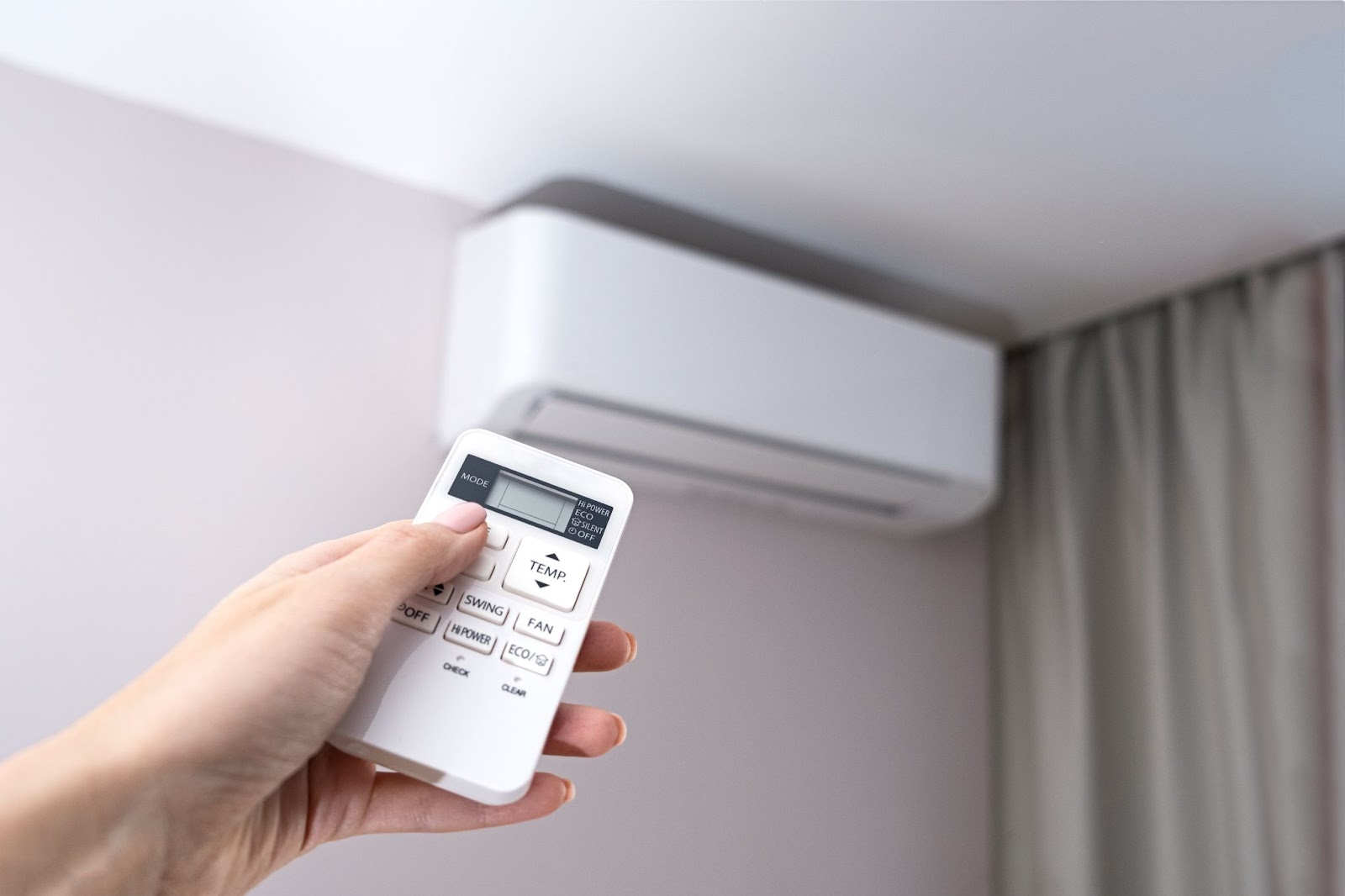
What Is a Ductless AC Unit?
In the search for more efficient and flexible air conditioning solutions, homeowners increasingly turn away from traditional systems in search of better alternatives. Ductless AC units have emerged as a particularly appealing choice among the various options available. These systems offer a combination of efficiency, convenience, and adaptability, making them well-suited to a wide range of living spaces and needs.
A ductless AC unit, often called a mini-split, is an air conditioning system that doesn’t require a network of ducts to distribute air. This system comprises two main parts: an indoor unit that releases cool air into the room and an outdoor unit that expels heat outside. These components are connected by a conduit, which houses the power cable, refrigerant tubing, suction tubing, and condensate drain, eliminating the need for bulky ductwork.
How Ductless AC Units Work
Ductless air conditioning units offer a modern solution to cooling homes without requiring extensive ductwork. These systems are particularly appealing for their efficiency, versatility, and relatively straightforward installation. Understanding how ductless AC units work is critical to appreciating their benefits and deciding whether they’re the right choice for your home cooling needs.
Components of a Ductless AC System
A ductless AC system primarily consists of two main components:
Indoor Unit: This part delivers cooled air directly into the living space. Mounted on the wall, ceiling, or floor, it contains an air filter, cooling coil, and fan.
Outdoor Unit: This houses the compressor and condenser coil. It expels the heat removed from the indoor air to the outside. The outdoor unit is connected to the indoor unit through a small conduit.
These components are linked by a conduit that runs through a small hole in the wall. The conduit carries power lines, refrigerant tubing, and a condensate drain line.
The Cooling Process for Ductless AC Units
The operation of a ductless AC unit revolves around a refrigeration cycle similar to that used in traditional air conditioning systems but without the need for ducts.
The cooling process of a ductless AC unit begins when the indoor unit pulls warm air from the room and passes it over a cold evaporator coil. Inside this coil, the refrigerant absorbs heat from the air, effectively cooling it down. This warm refrigerant is pumped to the outdoor unit, carrying the absorbed heat. Upon reaching the outdoor unit, the refrigerant flows through the condenser coil, releasing the absorbed heat into the outdoor air. The refrigerant cools down through this process and reverts to a liquid form. Finally, this cooled refrigerant is circulated back to the indoor unit, ready to absorb more heat from the room’s air, thus perpetuating the cooling cycle.
This cycle repeats as needed to maintain the desired temperature within the home.
Zoning and Flexibility
One of the unique features of ductless AC systems is their ability to cool different zones or rooms independently. Each indoor Unit can be controlled separately, allowing for different temperatures in various parts of the home. It enhances comfort and increases energy efficiency, as only the needed areas are cooled, avoiding waste in unoccupied spaces.
Efficiency and Environmental Impact
Ductless AC units are renowned for their efficiency. The absence of ducts minimizes energy losses associated with air leakage and thermal transfer in ductwork, which is common in traditional forced-air systems.
Many ductless systems are designed with advanced inverter technology, which allows the compressor to adjust its speed dynamically to match the cooling demand. This results in significant energy savings and a reduced environmental impact over time.
Ductless AC units operate on heat exchange and refrigeration principles without relying on an extensive network of ducts. This design offers considerable benefits regarding installation flexibility, energy efficiency, and individualized comfort. By understanding how these systems work, homeowners can make informed decisions about their cooling needs, potentially enjoying cost savings and improved indoor air quality.

Is a Ductless AC Right for You?
Deciding on ductless cooling hinges on assessing your cooling requirements, property layout, and preferences. Ductless systems, known for their efficiency and adaptability, are ideal for spaces lacking ductwork and offer significant energy savings.
These systems integrate seamlessly with the aesthetics of any space, offering minimal visual disruption while providing precise temperature control for individual rooms or areas, enhancing comfort. Although the initial installation cost may be higher, the long-term energy savings and the potential to increase a property’s overall value make it a sound investment across various settings, from residential to commercial and institutional environments.
Choosing the Right Ductless AC Unit
Selecting the ideal ductless AC unit requires evaluating the size of the area to be cooled, the space’s specific cooling requirements, and the system’s energy efficiency ratings. Understanding these factors is crucial, whether for a home, office, commercial space, or specialized environment. Consulting with HVAC professionals can offer indispensable advice and ensure that your decision is well-informed and tailored to your unique needs.
Ductless AC Units and Environmental Impact
The benefits of ductless AC units extend far beyond individual settings to impact the environment at large positively. Their high energy efficiency translates into reduced electricity consumption and lower greenhouse gas emissions, fostering a healthier planet. By choosing ductless systems, users contribute to a more sustainable approach to cooling and heating, aligning personal comfort with environmental responsibility.
The Future of Cooling Solutions
Ductless AC units signify a paradigm shift towards more sustainable, efficient, and adaptable cooling solutions across various settings. With ongoing technological advancements, these systems are set to play an increasingly pivotal role in residential settings and commercial and institutional designs, enhancing comfort and energy efficiency. As we progress, ductless AC technology is poised to become a cornerstone of modern, eco-friendly climate control strategies.
Pros and Cons of Ductless AC Units
Ductless AC systems have become increasingly popular due to their versatility and energy efficiency. However, like any cooling solution, they have advantages and drawbacks. Understanding these can help homeowners and commercial property owners make informed decisions.
Pros of Ductless AC Units
- Energy Efficiency: One of the most significant benefits of ductless AC systems is their energy efficiency. Ductless AC units can significantly reduce energy consumption and lower utility bills by avoiding the energy losses associated with ductwork in traditional HVAC systems.
- Flexibility and Zoning: Ductless systems allow for zoning or the ability to cool specific areas independently, leading to enhanced comfort and further energy savings since you only cool the spaces in use.
- Easy Installation: Compared to traditional systems that require ductwork, ductless AC units are easier and quicker to install. They need a tiny hole in the wall to connect the indoor and outdoor units, minimizing structural alterations and installation time.
- Improved Indoor Air Quality: Ductless AC units typically come with multi-stage filtration that can drastically reduce dust, bacteria, pollen, allergens, and other particulates in the air, improving indoor air quality.
- Design Flexibility: Ductless AC systems offer considerable design flexibility. They are compact indoor units that can be mounted on walls, ceilings, or even as floor-standing units, seamlessly integrating into any room’s aesthetic.

Cons of Ductless AC Units
- Higher Initial Cost: The upfront cost of purchasing and installing a ductless AC system can be higher than that of traditional systems, especially when multiple indoor units are required for different zones.
- Aesthetic Considerations: While ductless units are designed to be less obtrusive, indoor units on walls or ceilings may need to align with every homeowner’s or designer’s aesthetic preferences.
- Placement Limitations: The effectiveness of a ductless AC unit can be influenced by the placement of the indoor unit. Poor placement can lead to uneven cooling, impacting comfort.
- Maintenance Requirements: Each indoor unit of a ductless system requires regular cleaning and maintenance to function efficiently, which can be more cumbersome than maintaining a single central air conditioning unit.
- Capacity Limitations: While perfect for small to medium-sized spaces, ductless AC systems might not be the best solution for vast spaces due to their limited cooling and heating capacity compared to central HVAC systems.
Ductless AC systems offer a highly efficient, flexible, and customizable cooling and heating solution that fits various residential and commercial applications. However, the initial investment and aesthetic considerations may only suit some. Careful evaluation of these pros and cons is crucial in determining whether a ductless AC system suits your needs and circumstances.
Air Conditioning Services: Enhancing the Efficiency of Ductless Systems
Air conditioning services are crucial in maximizing ductless AC systems’ efficiency, longevity, and performance. From initial consultation and installation to routine maintenance and repairs, professional air conditioning services ensure that your ductless system operates at its best, providing optimal comfort while minimizing energy consumption.
Leveraging these services helps you make an informed decision when choosing the suitable ductless unit, guaranteeing that the system continues to meet your cooling needs effectively over time.
Visit our Kerivan-Lane blog to learn more about air conditioning services and more in Air Conditioning Services in Needham, MA.